How to Involve Neighbors in Emergency Response Planning?
In today's unpredictable world, the importance of being prepared for emergencies cannot be overstated. Engaging neighbors in emergency response planning is not just a good idea; it's a necessity. Imagine a scenario where a natural disaster strikes your community. Wouldn't it be comforting to know that you and your neighbors are ready to support each other? By fostering a culture of preparedness, you can create a resilient community that stands together in the face of adversity. This article will explore effective strategies to involve your neighbors in emergency response planning, ensuring that everyone is well-equipped to handle any situation that may arise.
Community involvement is the backbone of effective emergency response. When neighbors come together, they enhance communication and build trust, which are vital during crises. Think about it: in an emergency, who do you turn to first? It's likely your neighbors. By working together, you can ensure that everyone is prepared for potential emergencies. This collective effort not only improves individual readiness but also strengthens the entire community. After all, it’s not just about surviving a disaster; it’s about thriving together afterward.
To kickstart your emergency response planning, the first step is identifying key stakeholders in your neighborhood. This includes local leaders, community organizations, and residents who are willing to contribute to emergency response efforts. Engaging these individuals creates a network of support that can be invaluable during a crisis. Consider hosting a community meeting to discuss the importance of emergency planning and encourage participation. By bringing everyone to the table, you can leverage diverse skills and resources, making your planning efforts more effective.
Collaborating with local organizations can significantly amplify your emergency response efforts. These partnerships can provide essential resources, training, and support for community initiatives. For instance, local fire departments or health organizations often offer workshops or materials that can help educate the community about safety protocols. By establishing strong relationships with these entities, you can ensure that your neighborhood is well-prepared and informed. Remember, it’s all about teamwork—together, you can create a robust response plan that benefits everyone.
Schools are a cornerstone of community preparedness. Involving students, staff, and parents in emergency planning can foster a culture of safety and awareness. Schools can serve as training grounds for drills and simulations, allowing students to learn valuable skills that they can share with their families. Furthermore, when children are educated about emergency procedures, they often become enthusiastic advocates for safety at home. This ripple effect can significantly enhance community resilience.
Local businesses can play a crucial role in supporting emergency response efforts. By engaging them in your planning, you can tap into resources that might otherwise be unavailable. For example, businesses can provide supplies, sponsor training sessions, or even offer their facilities for community meetings. Strengthening these ties not only enhances overall preparedness but also builds a sense of community pride and cooperation. It’s a win-win situation!
In this digital age, social media platforms have become powerful tools for communication. They enable quick dissemination of information and foster connections among neighbors. Utilizing these platforms for emergency response planning allows you to reach a wider audience and keep everyone informed about upcoming meetings, training sessions, and emergency protocols. Consider creating a dedicated neighborhood group on platforms like Facebook or Nextdoor, where residents can share information, ask questions, and support one another. The more connected everyone feels, the more resilient your community will become.
Hosting workshops is an excellent way to educate residents about emergency preparedness. These events provide valuable information and encourage active participation in planning efforts. You might cover topics such as first aid, disaster response, and communication strategies during emergencies. By empowering residents with knowledge, you’re not just preparing them for potential disasters; you’re also fostering a sense of community. When people feel informed and connected, they are more likely to take action when it matters most.
Establishing neighborhood emergency response teams is a proactive way to empower residents to take action during crises. These teams can be trained in various areas, such as first aid, search and rescue, and communication. The more prepared individuals are, the more resilient the community becomes. Training these teams can enhance response capabilities, ensuring that help is available when it’s needed most. Plus, being part of a team fosters camaraderie and strengthens community bonds.
Regular drills and simulations are essential for practicing emergency response skills. These activities not only help residents become familiar with emergency procedures but also identify gaps in planning. Imagine how much more confident you would feel knowing that you and your neighbors have practiced responding to a fire or an earthquake! By conducting these drills, you can improve overall community readiness and ensure that everyone knows their role during a crisis.
Finally, regular evaluation and updates to emergency response plans are crucial to ensure they remain effective. Involving neighbors in this process fosters ownership and commitment to community safety. Schedule periodic reviews of your plans and invite feedback from residents. This collaborative approach not only keeps your emergency plans relevant but also strengthens the community’s commitment to preparedness. After all, an informed community is a safe community!
- Why is community involvement important in emergency response planning?
Community involvement enhances communication, builds trust, and ensures that everyone is prepared for potential emergencies. - How can I engage my neighbors in planning efforts?
Consider hosting community meetings, workshops, and utilizing social media to disseminate information and encourage participation. - What role do local businesses play in emergency preparedness?
Local businesses can provide resources, support, and facilities for training and community meetings, enhancing overall preparedness.
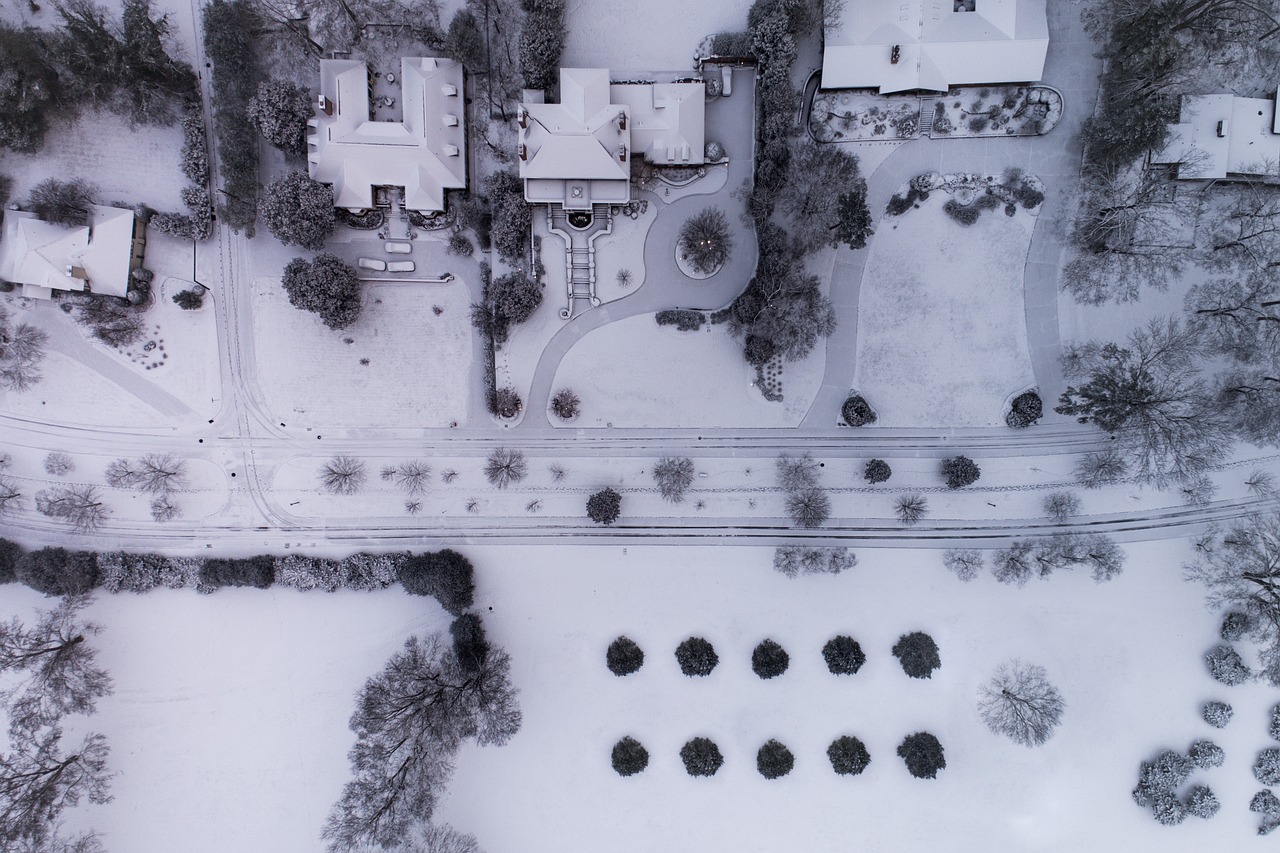
Understanding the Importance of Community Involvement
When it comes to emergency response planning, community involvement is not just a nice-to-have; it’s a necessity. Imagine facing a disaster—be it a natural calamity like a hurricane or a man-made crisis such as a fire. In these moments, the strength of our communities can be the difference between chaos and coordinated action. Engaging with neighbors fosters a sense of trust and enhances communication, ensuring that everyone is on the same page when the unexpected strikes.
Why is this so important? Well, consider this: in a crisis, people often turn to those they know and trust. When neighbors have established relationships, they are more likely to share vital information, resources, and support. This network of support can significantly boost the resilience of the entire community. Plus, when everyone is involved in the planning process, it ensures that the strategies developed are relevant and tailored to the specific needs of the area. It’s like building a safety net—when one thread is strong, the whole net holds better.
Furthermore, community involvement can lead to more comprehensive emergency plans. By pooling knowledge and resources, neighbors can identify potential risks and vulnerabilities specific to their area. For instance, a community with many elderly residents might prioritize different resources than one with a high number of families with young children. This tailored approach not only makes the plan more effective but also fosters a sense of ownership among residents.
Involving the community also encourages a culture of preparedness. When people see their neighbors actively participating in planning and drills, it sends a message: “We are in this together.” This collective mindset can motivate individuals to take their own preparedness steps, such as creating emergency kits or developing communication plans with their families. As a result, the entire neighborhood becomes more equipped to handle emergencies, which ultimately leads to a safer environment for all.
To further illustrate the impact of community involvement, consider the following benefits:
- Enhanced Communication: Regular meetings and updates keep everyone informed.
- Resource Sharing: Neighbors can share tools, skills, and knowledge.
- Increased Participation: Engaged communities are more likely to participate in drills and training.
- Emotional Support: A united community can provide emotional reassurance during crises.
In conclusion, the importance of community involvement in emergency response planning cannot be overstated. It’s about creating a network of support, ensuring tailored responses, and fostering a culture of preparedness. By working together, neighbors can transform their communities into safe havens, ready to face whatever challenges come their way.

Identifying Key Stakeholders
When it comes to emergency response planning, is like assembling a dream team for a big game. You wouldn't want to play without your star players, right? In the context of your neighborhood, stakeholders can include a variety of individuals and organizations that play a crucial role in enhancing community safety and preparedness. Think of them as the backbone of your emergency response efforts. These stakeholders typically include local leaders, community organizations, and residents who are willing to contribute their time and resources to make your neighborhood a safer place.
Local leaders, such as elected officials or neighborhood association heads, can provide invaluable support and direction. They often have access to resources and networks that can facilitate planning and response efforts. Additionally, community organizations, like non-profits or volunteer groups, can offer specialized knowledge and skills, ranging from first aid training to logistical support during emergencies. Engaging these groups can significantly amplify your planning efforts.
But let’s not forget about the residents themselves! Every neighbor has unique skills and experiences that can be harnessed for the greater good. For instance, you might have a retired firefighter living down the street who could provide fire safety tips, or a nurse who can share first aid knowledge. By involving residents in the planning process, you create a sense of ownership and commitment to community safety. It’s essential to encourage open communication and invite everyone to the table, as this inclusivity fosters trust and collaboration.
To effectively identify and engage these key stakeholders, consider organizing a community meeting where everyone can express their interests and concerns. This can be an informal gathering, perhaps over coffee, where neighbors can share their ideas and brainstorm ways to enhance emergency preparedness together. You might even create a stakeholder map to visualize who is involved and how they can contribute. This map could include:
| Stakeholder Type | Potential Contributions |
|---|---|
| Local Leaders | Resource access, strategic direction |
| Community Organizations | Training, logistical support |
| Residents | Skills, local knowledge, volunteer efforts |
In summary, identifying key stakeholders is a foundational step in emergency response planning. By recognizing the diverse talents and resources available within your community, you can create a robust network that is well-equipped to handle potential crises. Remember, the strength of your community lies in its people, and by working together, you can build a safer, more resilient neighborhood.
- What are key stakeholders in emergency planning? Key stakeholders include local leaders, community organizations, and residents who contribute to emergency response efforts.
- How can I engage my neighbors in emergency planning? Organize community meetings, workshops, and informal gatherings to discuss emergency preparedness and gather input.
- Why is community involvement important in emergencies? Community involvement enhances communication, builds trust, and ensures everyone is prepared for potential emergencies.

Building Relationships with Local Organizations
When it comes to emergency response planning, one of the most effective strategies is building strong relationships with local organizations. These organizations can range from non-profits and community groups to local government agencies and emergency services. By fostering these connections, you're not just creating a support network; you're also enhancing the community's overall resilience against disasters. Think of it as weaving a safety net—each strand represents a different organization, and together, they create a robust barrier against potential crises.
First and foremost, it's essential to identify which local organizations are already active in your community. This could include fire departments, medical facilities, and non-profit organizations focused on disaster relief. Once you’ve pinpointed these groups, reach out to them. A simple coffee meeting or a casual lunch can pave the way for fruitful discussions about how you can collaborate on emergency preparedness initiatives. Remember, it’s not just about what they can offer; it’s also about what you can bring to the table. Sharing resources, knowledge, and even volunteers can make a significant difference.
Moreover, consider organizing joint events or workshops. These gatherings can serve multiple purposes: educating the community about emergency preparedness, allowing organizations to showcase their resources, and providing a platform for residents to ask questions and voice concerns. When organizations work together, they amplify their impact. For instance, a local hospital could partner with a community center to host a first-aid training session, benefiting not just the participants but also creating a stronger bond between the organizations involved.
Another effective way to build relationships is through consistent communication. Utilize social media, newsletters, and community boards to keep everyone informed about upcoming events, training sessions, and resources. This ongoing dialogue helps to ensure that all parties are on the same page and can respond effectively in times of need. Plus, it fosters a sense of community ownership; when residents see organizations actively engaging with one another, they are more likely to participate and invest in these initiatives.
In conclusion, building relationships with local organizations is not just beneficial; it’s essential for effective emergency response planning. By collaborating, sharing resources, and maintaining open lines of communication, communities can bolster their preparedness and resilience. Just like a well-tuned orchestra, each organization plays its part, and together, they create a harmonious and effective emergency response system.
- Why is community involvement important in emergency response planning?
Community involvement enhances communication, builds trust, and ensures that everyone is prepared for potential emergencies. - How can I identify key stakeholders in my neighborhood?
Look for local leaders, community organizations, and engaged residents who can contribute to emergency response efforts. - What role do schools play in emergency preparedness?
Schools can foster a culture of safety by involving students, staff, and parents in emergency planning initiatives. - How can social media help in emergency response planning?
Social media platforms enable quick dissemination of information and foster connections among neighbors, making it easier to coordinate during emergencies.
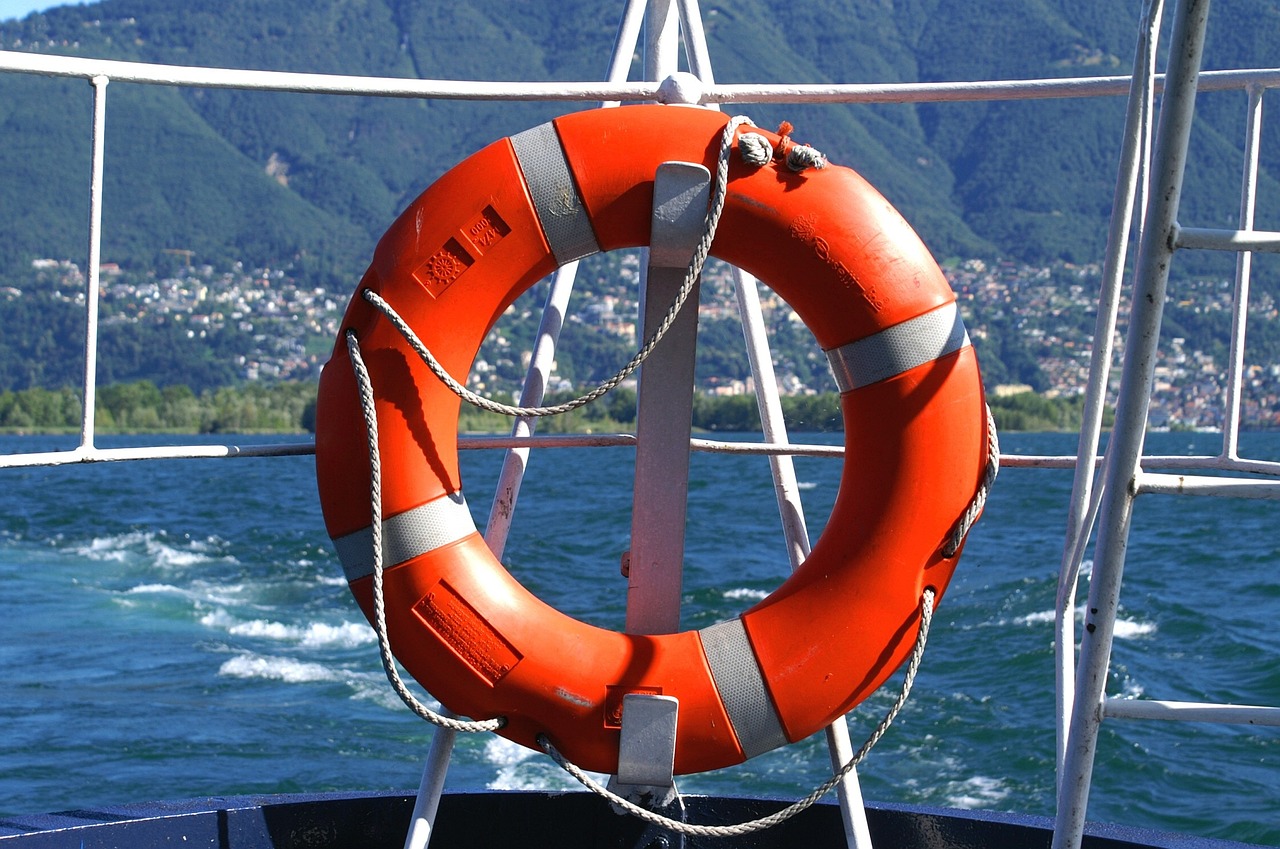
Engaging Schools and Educational Institutions
Engaging schools and educational institutions in emergency response planning is not just beneficial; it's essential for cultivating a culture of safety within the community. Schools serve as central hubs where students, staff, and parents converge, making them ideal platforms for disseminating important information about emergency preparedness. Imagine a school where children are not only learning math and science but also the vital skills needed to respond effectively in emergencies. This transformation can begin with simple initiatives.
One effective way to involve schools is by integrating emergency preparedness into the curriculum. Schools can teach students about various types of emergencies—natural disasters, fire safety, and medical emergencies—through interactive lessons. For instance, conducting a fire drill or a lockdown drill can help students understand the importance of being prepared while also making the learning process engaging. By incorporating these drills into the school calendar, students will be more familiar with emergency procedures, and they can share this knowledge with their families, extending the reach of preparedness.
Moreover, schools can host community forums and workshops that invite parents and local emergency services to discuss emergency plans. This not only informs families about what to do in a crisis but also encourages open dialogue between parents, educators, and emergency responders. Schools can serve as a bridge connecting families with local resources, ensuring that everyone understands the importance of being prepared.
Additionally, schools can collaborate with local organizations to create safety programs. For example, partnering with local fire departments for educational assemblies can provide students with firsthand knowledge about fire safety and prevention. These partnerships can also lead to the development of student-led initiatives, where older students mentor younger ones about emergency preparedness. This not only empowers students but also fosters a sense of responsibility and community spirit.
To further enhance these efforts, schools can establish Emergency Response Clubs. These clubs can engage students in activities that promote safety awareness, such as creating informational posters, participating in community drills, or volunteering for local emergency preparedness events. By doing so, students learn valuable life skills and contribute positively to their community, making them more likely to take action during real emergencies.
In summary, engaging schools and educational institutions in emergency response planning is a multifaceted approach that benefits not just students but the entire community. By fostering an environment where safety is prioritized and knowledge is shared, we can create a more resilient community ready to face any challenge that comes its way. The ripple effect of these initiatives can lead to a community where preparedness becomes second nature, ultimately saving lives and reducing panic during real emergencies.
- Why is it important to involve schools in emergency response planning? Schools are central to communities, and involving them helps disseminate critical safety information to families and fosters a culture of preparedness.
- How can schools integrate emergency preparedness into their curriculum? Schools can include lessons on various emergencies and conduct drills, making preparedness part of regular education.
- What role can parents play in school emergency planning? Parents can participate in forums, volunteer for drills, and help disseminate information within their families.
- Are there resources available for schools to develop emergency plans? Yes, many local emergency services and organizations provide resources and training for schools to develop effective emergency plans.
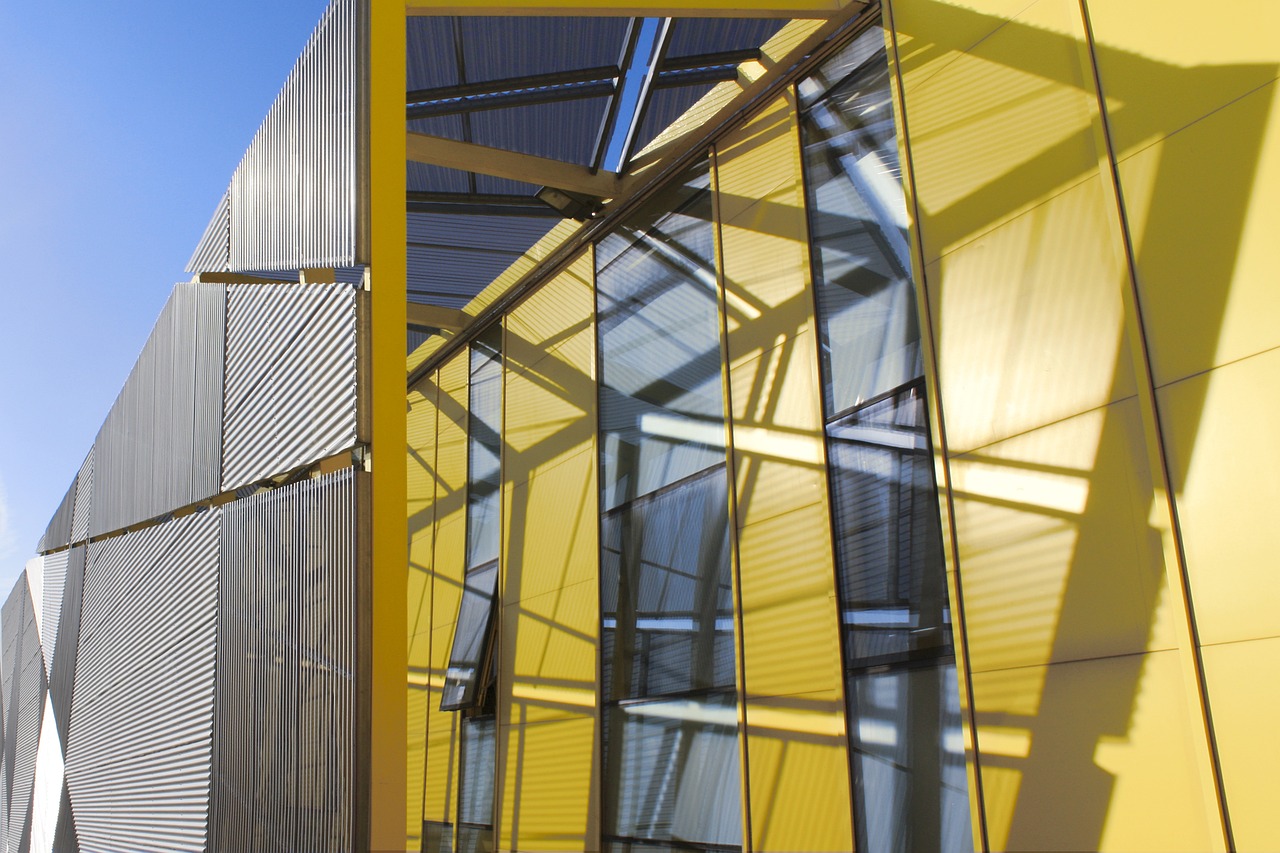
Connecting with Local Businesses
When it comes to emergency response planning, local businesses are not just bystanders; they can be invaluable partners in creating a resilient community. Imagine your favorite café or grocery store stepping up to provide resources during a crisis. By fostering connections with these businesses, we can build a safety net that benefits everyone. But how do we go about it? First, it’s essential to recognize that local businesses have unique assets that can be leveraged during emergencies. Whether it’s providing supplies, offering shelter, or even donating food, the contributions of local businesses can make a significant difference.
To effectively engage local businesses, consider the following strategies:
- Establish Open Communication: Create a dialogue with business owners about their role in emergency planning. This can be as simple as a casual chat or a more structured meeting.
- Highlight Mutual Benefits: Emphasize how participating in emergency response planning can enhance their community image and customer loyalty. Businesses that show they care about community safety often attract more customers.
- Develop Collaborative Plans: Work together to create a plan that outlines how businesses can assist during emergencies. This could include designating a safe space for community gatherings or providing essential supplies.
Moreover, local businesses can help disseminate critical information during emergencies. They often have a steady flow of customers, which puts them in a prime position to share updates and resources. For instance, if a natural disaster strikes, a local hardware store can inform customers about safety protocols and available supplies. This kind of proactive engagement not only keeps the community informed but also reinforces the business's role as a trusted resource.
Additionally, consider organizing joint training sessions or workshops that involve both residents and business owners. These events can cover topics like first aid, emergency preparedness, and crisis management. By equipping both community members and local businesses with the knowledge they need, you create a more prepared environment overall. Picture a scenario where a local bakery has staff trained in first aid; they could provide immediate assistance during a crisis while also serving as a comforting presence in the community.
In conclusion, connecting with local businesses is a win-win for community emergency response planning. By leveraging their resources, expertise, and community presence, we can create a robust network of support that enhances overall preparedness. So, the next time you visit your local store, don’t hesitate to strike up a conversation about how they can get involved in your neighborhood's emergency response efforts. After all, a prepared community is a resilient community!
Q: How can local businesses contribute to emergency response planning?
A: Local businesses can provide resources, shelter, and supplies during emergencies. They can also help disseminate information and participate in training sessions.
Q: What are some examples of local businesses getting involved?
A: Examples include grocery stores donating food for shelters, hardware stores offering safety supplies, and restaurants providing meals for emergency responders.
Q: How do I approach a local business about getting involved?
A: Start by establishing open communication, highlighting mutual benefits, and discussing collaborative plans that outline how they can assist during emergencies.

Utilizing Social Media for Communication
In today's digital age, social media has become an essential tool for communication, especially when it comes to emergency response planning. Imagine being able to reach out to your neighbors instantly with just a few clicks! Platforms like Facebook, Twitter, and Instagram can serve as lifelines during a crisis, enabling quick dissemination of crucial information. But how can we effectively harness these platforms to enhance our community's preparedness?
First and foremost, creating dedicated community groups on social media can foster a sense of belonging and urgency. These groups can serve as a hub where residents can share information, resources, and updates regarding emergency preparedness. For instance, a neighborhood Facebook group can be used to post alerts about local hazards, share tips on emergency kits, or organize community drills. The beauty of these groups is that they allow for real-time communication, making it easier to rally support and keep everyone informed.
Moreover, the visual nature of social media can be leveraged to create engaging content that educates the community. Infographics detailing emergency procedures, videos demonstrating safety drills, or even live Q&A sessions can capture attention more effectively than a traditional flyer. A well-crafted post can go viral, reaching not just your immediate neighbors but potentially spreading awareness to a wider audience, which is crucial in times of crisis.
Another powerful aspect of social media is its ability to connect with various stakeholders. By tagging local organizations, emergency services, and even local businesses in your posts, you can create a network of support that enhances community resilience. For example, a tweet about an upcoming community workshop can be amplified by tagging local fire departments or schools, encouraging them to share the information with their followers.
Additionally, social media can serve as a platform for feedback. Residents can share their concerns or suggestions regarding emergency planning, fostering a collaborative atmosphere. This engagement not only helps in refining the plans but also instills a sense of ownership among community members. When people feel that their voices are heard, they are more likely to participate actively in emergency preparedness efforts.
However, it's crucial to remain vigilant about misinformation, which can spread just as quickly as accurate information on social media. Establishing a clear channel for official communication, such as a community website or a designated social media account, can help combat this issue. By directing residents to verified sources, you can ensure that everyone receives accurate and timely information during emergencies.
In summary, utilizing social media for communication in emergency response planning is not just about sending out alerts; it's about building a connected, informed, and resilient community. By fostering engagement, sharing valuable resources, and maintaining clear communication channels, we can ensure that our neighborhoods are not just prepared, but also united in the face of potential disasters.
- How can I start a community group on social media? You can create a group on platforms like Facebook by selecting 'Create Group' and inviting neighbors to join. Make sure to set clear guidelines for the group to maintain a positive environment.
- What types of content should I share on social media for emergency preparedness? Share infographics, emergency plans, safety tips, and updates about local hazards. Engaging videos and live sessions can also attract attention.
- How can I ensure the information shared is accurate? Establish a designated communication channel for official updates, and encourage residents to share information from verified sources only.

Organizing Community Workshops
Organizing community workshops is a fantastic way to bring neighbors together while educating them about emergency preparedness. Think of these workshops as a gathering of minds, where everyone can share their experiences, insights, and ideas. By creating a safe space for discussion, you can foster a sense of community and encourage participation. Imagine how empowering it feels to be part of a group that’s not just talking about what to do in an emergency but actively preparing for it!
Workshops can cover a variety of topics, from basic first aid training to disaster response strategies. This diversity ensures that there’s something for everyone, regardless of their prior knowledge or experience. For instance, you might include sessions on:
- Basic first aid and CPR
- Fire safety and evacuation plans
- How to create an emergency kit
- Communication strategies during a crisis
Moreover, inviting local experts to lead these workshops can significantly enhance their effectiveness. Whether it’s a firefighter sharing fire safety tips or a medical professional demonstrating CPR techniques, having credible voices can make the information more relatable and trustworthy. Plus, it’s a great opportunity for residents to ask questions and engage directly with these experts.
Another crucial aspect of organizing workshops is ensuring accessibility. Consider the timing and location of the events to maximize participation. Hosting workshops in community centers or local schools can make it easier for families to attend. Additionally, providing childcare or refreshments can further encourage attendance. After all, who wouldn’t want to learn essential life skills while enjoying a cup of coffee?
To keep the momentum going after the workshops, consider creating a follow-up plan. This could involve setting up a community newsletter or a dedicated social media group where residents can share tips, ask questions, and stay updated on emergency preparedness activities. By maintaining this connection, you reinforce the lessons learned during the workshops and encourage ongoing engagement.
Finally, it’s essential to gather feedback after each workshop. This can be done through simple surveys or informal discussions. Understanding what worked well and what could be improved will not only enhance future workshops but also show residents that their opinions matter. It’s all about building a community that feels empowered and prepared to face any emergency together!
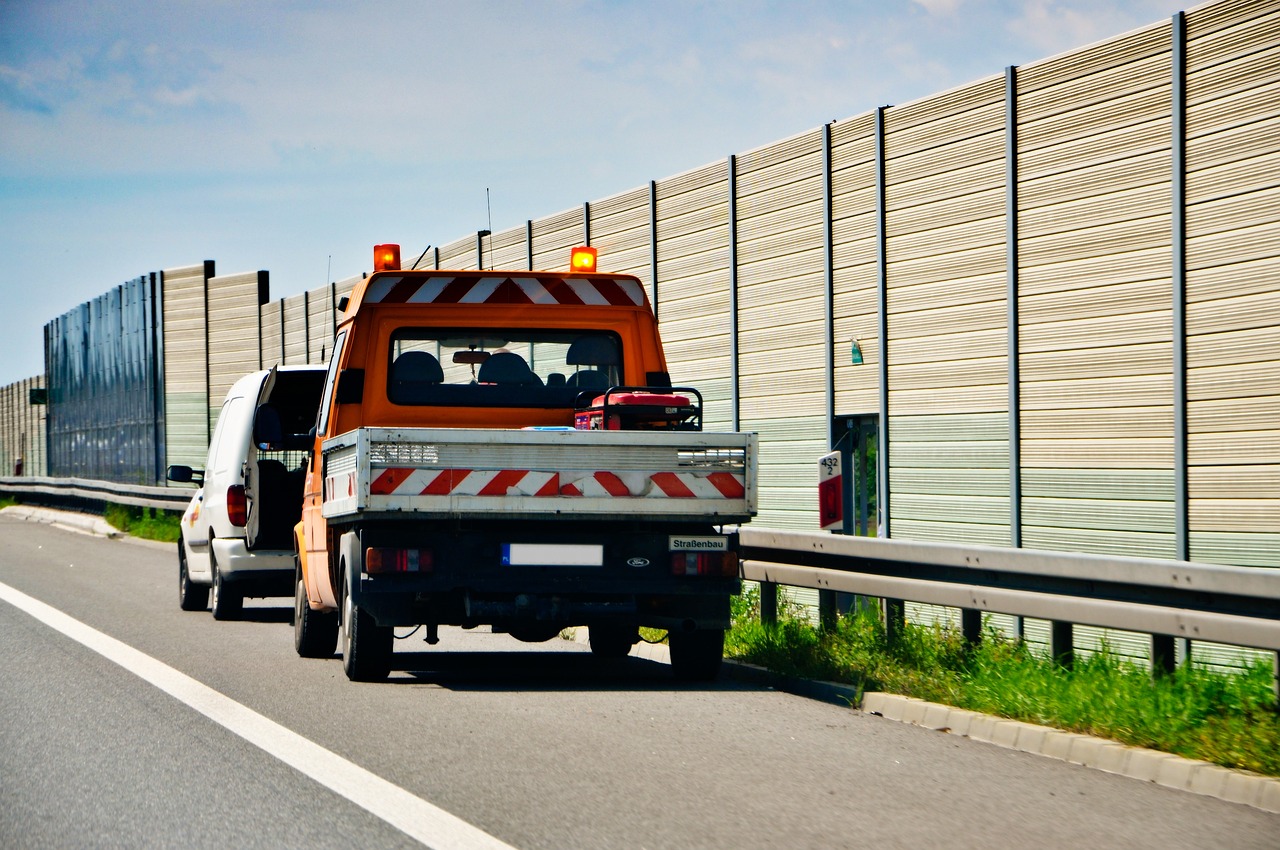
Creating Emergency Response Teams
Establishing neighborhood emergency response teams (NERTs) is a proactive step that communities can take to ensure they are prepared for any crisis that may arise. Think of these teams as the backbone of community resilience; they are the first line of defense when disaster strikes. By empowering residents to take action, we create a network of support that can respond swiftly and effectively when emergencies occur. But how do we go about creating these teams?
First and foremost, it’s essential to identify interested and committed individuals within the community. This can include a diverse mix of people from different backgrounds, professions, and age groups. The more varied the team, the better equipped it will be to handle a range of emergencies. For instance, having a mix of medical professionals, educators, and even local business owners can provide a wealth of skills and resources. To facilitate this, consider hosting an initial meeting where residents can express their interest and discuss their skills. This not only helps in identifying potential team members but also fosters a sense of community and collaboration.
Once you’ve gathered a group of interested residents, the next step is to provide training. Training can cover a variety of topics, such as first aid, basic firefighting techniques, and emergency communication strategies. You might even want to partner with local emergency services or organizations like the Red Cross to provide professional training sessions. Regular training not only enhances the team’s skills but also builds confidence among members. After all, in a crisis, every second counts, and being well-prepared can make all the difference.
To keep the momentum going, consider organizing regular meetings and practice drills. These gatherings serve multiple purposes: they reinforce training, allow for the sharing of new information, and strengthen the bonds among team members. During these meetings, you can also discuss real-life scenarios and how the team would respond. This practice helps to identify any gaps in knowledge or resources and allows for continuous improvement of the team’s response strategies.
Moreover, it’s crucial to establish clear communication channels within the team and with the broader community. Utilize tools like group messaging apps or social media platforms to facilitate quick and efficient communication. This ensures that everyone is informed and can act promptly during an emergency. For instance, if a natural disaster is looming, a simple message can alert team members to gather and prepare. In addition, consider creating a contact list that includes all team members, local emergency services, and key community stakeholders. This list can act as a quick reference guide during emergencies.
Finally, don’t forget to celebrate successes and milestones as a team. Whether it’s completing a training session or successfully responding to a minor emergency, acknowledging these achievements can boost morale and encourage continued participation. Building a strong sense of community is what makes these teams effective, and recognition plays a significant role in that.
In conclusion, creating neighborhood emergency response teams is not just about preparation; it’s about fostering a sense of belonging and unity among residents. By taking these steps, communities can ensure that they are not only ready for emergencies but also stronger together. Remember, in times of crisis, it’s the people around us who will make the biggest difference.
- What is a Neighborhood Emergency Response Team?
A NERT is a group of community members trained to assist in emergency situations, providing support and resources when needed. - How can I join a NERT?
Contact your local community center or neighborhood association to learn about upcoming meetings and training sessions. - What kind of training is provided?
Training can include first aid, emergency communication, and basic firefighting, often facilitated by local emergency services. - How often do NERTs meet?
Regular meetings can vary, but it’s beneficial to hold them at least quarterly to maintain skills and team cohesion.
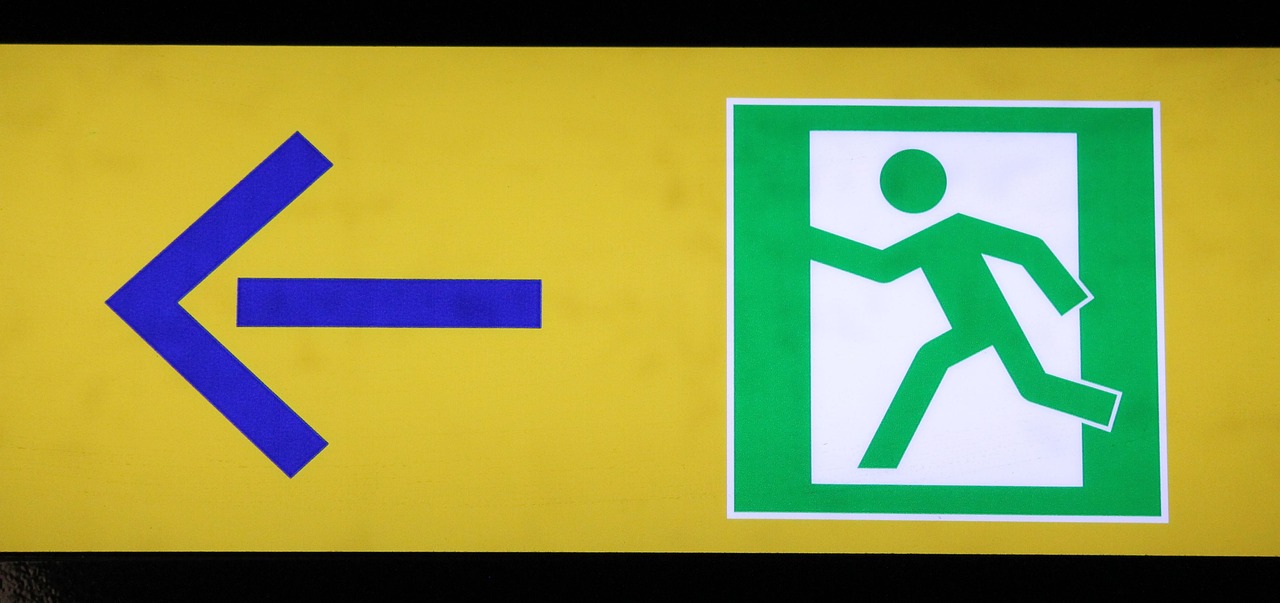
Conducting Drills and Simulations
When it comes to emergency preparedness, conducting drills and simulations is like rehearsing for a big performance; you want everything to go smoothly when the curtain rises. These activities are not just about going through the motions; they are essential for ensuring that everyone in the community knows their roles and responsibilities during a crisis. Imagine a fire alarm ringing in your neighborhood. Would you know exactly what to do? Would your neighbors? By actively participating in drills, residents can develop a clear understanding of emergency protocols, which can make all the difference when seconds count.
Drills provide an opportunity to practice various scenarios, whether it's a natural disaster, a fire, or even a medical emergency. For instance, you might organize a fire drill where residents practice evacuating their homes and gathering at a designated safe spot. This not only helps familiarize everyone with the evacuation routes but also builds a sense of camaraderie and teamwork among neighbors. After all, in an emergency, having a supportive community can significantly ease the stress of the situation.
Moreover, simulations can be tailored to address specific risks that your neighborhood may face. For example, if you live in an area prone to flooding, you might conduct a simulation that involves moving to higher ground. This hands-on experience can help residents visualize their actions during a real emergency, making them more likely to respond effectively when it happens. You can even incorporate local emergency services into these drills, allowing residents to interact with first responders and learn from their expertise.
To ensure these drills are effective, it’s crucial to evaluate them afterward. Gather feedback from participants about what went well and what could be improved. This evaluation process allows for continuous learning and adaptation of the emergency response plan. You can create a simple feedback form to collect opinions and suggestions, which can be discussed in community meetings. Remember, the goal here is not just to check a box but to truly enhance community readiness.
In addition to the practical skills gained from drills, the emotional aspect cannot be overlooked. Knowing that you are prepared can significantly reduce anxiety and panic during a real emergency. It fosters a sense of security and resilience within the community. So, why not make drills a regular part of your community calendar? Schedule them quarterly or biannually, and watch as your neighborhood transforms into a well-prepared unit ready to face any challenge that comes its way.
In conclusion, conducting drills and simulations is a proactive step towards building a resilient community. It empowers residents, strengthens relationships, and ultimately enhances the overall safety of the neighborhood. So, gather your neighbors, plan those drills, and create an environment where everyone feels informed, prepared, and ready to respond when it matters most.
Q1: How often should we conduct emergency drills?
A1: It's recommended to conduct emergency drills at least twice a year to keep everyone familiar with the procedures and to make necessary adjustments based on feedback.
Q2: What types of emergencies should we simulate?
A2: Focus on the most likely scenarios for your area, such as fires, earthquakes, floods, or severe weather events. Tailor simulations to address specific community needs.
Q3: Can we involve local emergency services in our drills?
A3: Absolutely! Inviting local emergency responders can provide invaluable training and insights for residents, making the drills more realistic and educational.
Q4: How can we encourage participation in drills?
A4: Promote the drills through community meetings, social media, and flyers. Highlight the benefits of participation, such as enhanced safety and community bonding.
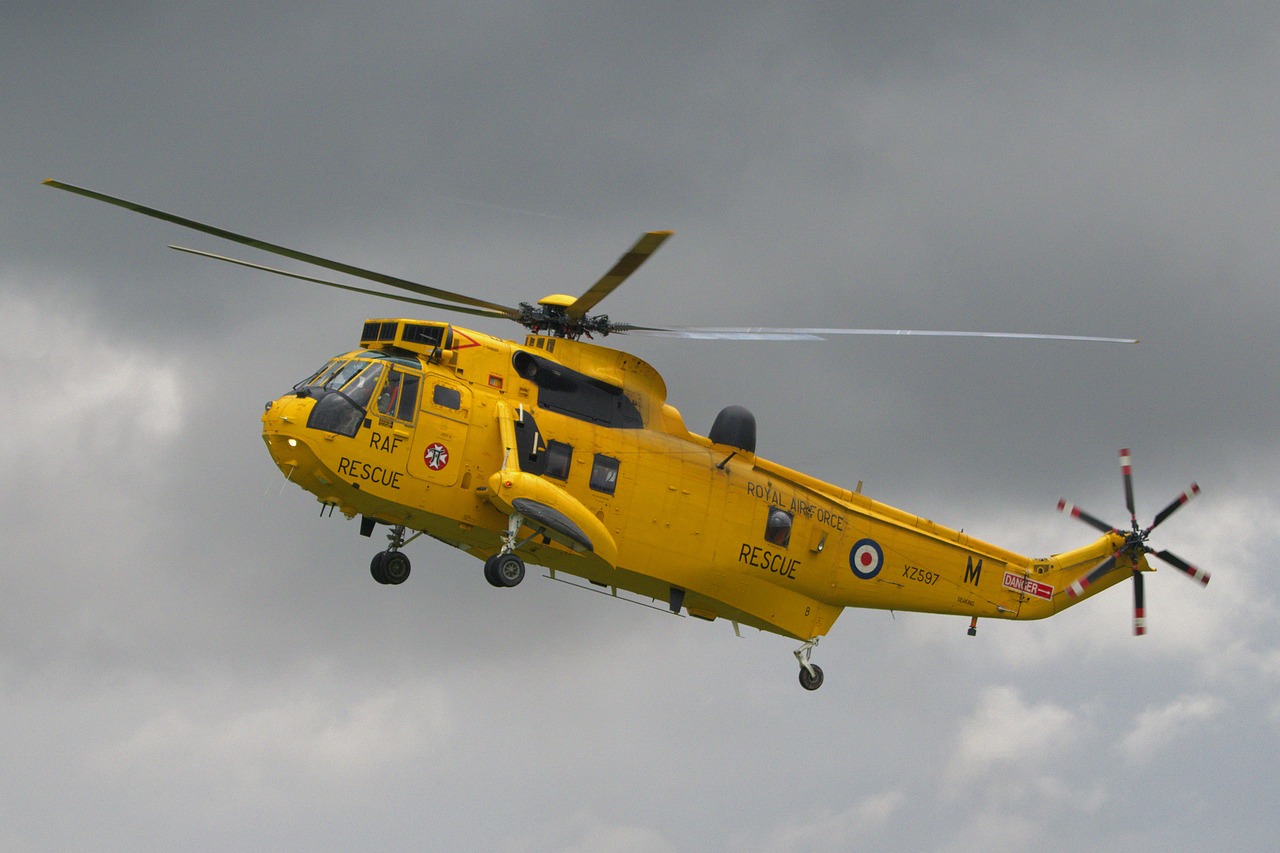
Evaluating and Updating Plans Regularly
When it comes to emergency response planning, one of the most critical yet often overlooked aspects is the need for regular evaluation and updates. Just like a car requires routine maintenance to run smoothly, your community's emergency response plans must be periodically checked and refined to ensure they are effective and relevant. Imagine planning for a storm only to find out that your strategies are outdated because the last review was years ago. This can lead to chaos and confusion when every second counts.
Regular evaluations not only help identify weaknesses in your plan but also allow you to incorporate new resources and technologies that may have emerged since the last update. For instance, if your neighborhood has recently acquired new communication tools or established partnerships with local organizations, these should be integrated into your emergency response strategy. Furthermore, involving community members in this process fosters a sense of ownership and responsibility, making them more likely to engage actively when an emergency arises.
To effectively evaluate and update emergency plans, consider implementing the following strategies:
- Schedule Regular Reviews: Set a specific timeline for when evaluations will occur—be it quarterly, bi-annually, or annually. Consistency is key!
- Gather Feedback: Create opportunities for community members to provide input. This can be through surveys, community meetings, or informal discussions. Their insights can be invaluable.
- Conduct Simulations: Running drills not only prepares residents but also highlights areas that may need improvement in your plans.
- Stay Informed: Keep up with the latest trends in emergency management and community safety. This knowledge can help you adapt your plans to meet evolving challenges.
After conducting evaluations, it’s essential to communicate any changes to the entire community. This can be done through community newsletters, social media announcements, or even local meetings. Keeping everyone informed ensures that all residents are aware of the latest procedures and can act swiftly in times of crisis.
Lastly, remember that emergency planning is not a one-time task but a continuous process. By regularly evaluating and updating your emergency response plans, you’re not just preparing for disasters; you’re building a resilient community that can face any challenge together. This proactive approach can make all the difference when the unexpected occurs.
Q: How often should we evaluate our emergency response plans?
A: It is recommended to evaluate your plans at least once a year, but more frequent reviews (quarterly or bi-annually) can provide better preparedness.
Q: Who should be involved in the evaluation process?
A: Involve key community stakeholders, including local leaders, residents, and representatives from local organizations, to gather diverse perspectives.
Q: What should we do if we find gaps in our plans?
A: Address the gaps immediately by brainstorming solutions with your community and integrating new strategies into your plans.
Q: How can we ensure everyone in the community is informed about updates?
A: Utilize multiple communication channels such as social media, community newsletters, and local meetings to disseminate information effectively.
Frequently Asked Questions
- Why is community involvement important in emergency response planning?
Community involvement is crucial because it enhances communication and builds trust among neighbors. When everyone is engaged, it ensures that the community is better prepared to handle emergencies collectively. Think of it like a team sport; when everyone plays their part, the team performs better!
- Who are the key stakeholders to involve in emergency planning?
Key stakeholders include local leaders, community organizations, and residents. These individuals can contribute valuable insights and resources, making the planning process more effective. Just like assembling a diverse cast for a play, each stakeholder brings unique strengths to the table!
- How can local organizations help in emergency response efforts?
Local organizations can provide essential resources, training, and support for community initiatives. By collaborating with them, neighborhoods can amplify their emergency response capabilities. It's like having a powerful ally in your corner during a challenging match!
- What role do schools play in community preparedness?
Schools are vital in fostering a culture of safety and awareness. By involving students, staff, and parents in emergency planning, schools can help create a more informed and prepared community. Think of schools as the training grounds for future community leaders!
- How can social media be utilized for emergency planning?
Social media platforms are excellent for quick communication and information sharing. They help neighbors connect and stay informed about emergency response efforts. Imagine it as a digital town square where everyone can gather and share important updates instantly!
- What are the benefits of organizing community workshops?
Community workshops educate residents about emergency preparedness and encourage active participation. These events create a sense of unity and shared responsibility, much like a potluck dinner where everyone brings something to the table!
- What is the purpose of creating emergency response teams?
Establishing neighborhood emergency response teams empowers residents to take action during crises. Training these teams enhances community resilience and ensures that everyone knows their roles in an emergency, similar to having a well-rehearsed crew ready for a big performance!
- Why are drills and simulations important?
Regular drills and simulations allow residents to practice their emergency response skills, identify gaps in planning, and improve overall readiness. It's like a dress rehearsal before the big show—ensuring that everything runs smoothly when it counts!
- How often should emergency response plans be evaluated and updated?
Emergency response plans should be evaluated and updated regularly to ensure they remain effective. Involving neighbors in this process fosters ownership and commitment to community safety. After all, a plan is only as good as the people who believe in it!


















